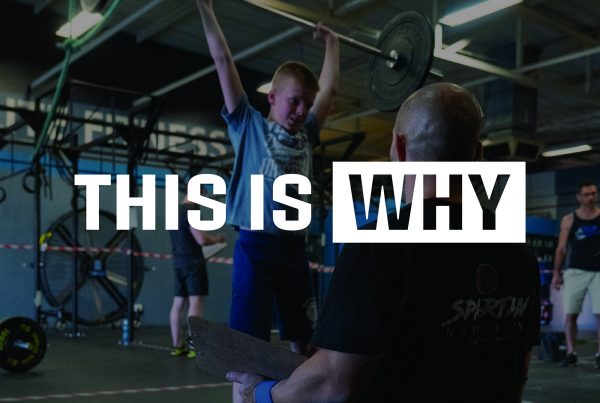I’ve written about this topic and presented on it a fair bit, but I couldn’t possibly know what I’m talking about. So here’s a good, easy-to-read article from one of the oldest professionals in our industry.
Is Cardio Making You Skinny Fat?
By Charles Poliquin, Strength Sensei
Not including athletes, the reason most of us exercise is to:
- Obtain or maintain an attractive body
- Stay healthy and prevent disease
Yet, when you ask the majority what they’re doing to get there, they commonly answer:
- Running, cycling, swimming, or any other moderate-intensity steady-state aerobic activity (a.k.a. CARDIO!)
This response stems from the false belief that exercise should focus on burning calories, and the reinforcement from conventional wisdom that endurance training is the best way to stay healthy and fit.
Meanwhile, the only thing cardio promotes is the ability to run for a really long time. And aside from creating a physique that’s far from ideal, this is an inferior biomarker for health and longevity.
- Muscle Mass
- Strength
- Metabolic Rate
- Body Fat Percentage
- Aerobic Capacity
What’s worse, is that cardio reduces the more critical biomarkers in the process. Those that continue to run, swim, and cycle further and more frequently are losing muscle; and as it continues to decline they’re losing strength, storing fat, and reducing their resting metabolic rate.
Chronic Cardio = Excess Cortisol
One of the ways cardio destroys muscle is via elevations in the stress hormone, cortisol. During exercise, cortisol is secreted as soon as a workout starts and continues to rise until completion.
- A study from 1976 in the Journal of Applied Physiology found two times the cortisol at 30min of exercise (75% intensity) compared to 10min.
The longer the workout, the higher the cortisol, and the slower the speed before it returns to normal. This is demonstrated when comparing the cortisol levels of amateur endurance athletes with the general population. Those running the furthest and most frequently exhibited the highest levels.
- A study from 2011 analyzed the cortisol levels in 304 amateur endurance athletes and the average additional secretion above the control was 42%.
Other than a long list of negative health consequences (altered immune function, cognitive decline, damaged reproductive health, bone loss, etc.), excess cortisol promotes fat storage and muscle loss. Mainly because it inhibits testosterone, and generates a poor testosterone-to-cortisol (T:C) ratio.
A high T:C ratio is anabolic (muscle-building), while a low ratio is catabolic (muscle-wasting).
With cortisol increasing steadily throughout a workout and testosterone peaking at 20-30 minutes, an unfavorable T:C ratio is experienced during lengthy exercise bouts. Leaving those training for marathons and triathlons in a chronic muscle-wasting environment…
…and those fooled into ‘exercising to burn’ not far behind.
Chronic Cardio = Type 2 Fiber Loss
Another way aerobic or endurance exercise leads to muscle loss, is by causing a shift in fiber type. As illustrated below, endurance training produces a considerable shift from Type-2 (favor testosterone) to Type-1 muscle fibers (favor cortisol) in just 16 weeks.
Other than facilitating testosterone and muscle growth, type-2 muscle fibers promote fat loss. Meaning, the less you have the less you burn. Interestingly, the inactive population has more type-2 fibers than endurance athletes.
Implying that NON-runners have superior testosterone-to-cortisol ratios; and suggesting that the practice of ‘jogging’ may be accelerating the muscle loss, fiber shift, and fat storage that’s normally associated with aging.
Chronic Cardio = Reduced RMR
The reason the majority continues to select cardio as their method for getting fit is because they’ve bought into the calorie reduction method to losing weight. They’ve been led to believe that obtaining a better physique requires consuming less calories, burning more calories, or a combination of the two.
Although many end up pushing through the exhausting workouts and extreme battle with hunger to achieve some degree of ‘weight-loss,’ the results are short-lived and the damage is long-lasting. Mainly, because our body seeks an energy homeostasis and adjusts for the low intake (during a diet), or high output (from exercise), by stockpiling fat for future fuel needs, increasing hunger to access more calories, lowering the basal metabolic rate, or burning tissue with a high-energy cost (muscle):
Research suggests that nearly 40% of weight lost in a caloric deficit is muscle.
Aside from the long-term health consequences of less muscle, this further reduces our basal or resting metabolic rate (the # of calories we burn while sedentary). Since 60-75% of our total energy expenditure is determined by this rate, and we’re already fighting a natural reduction with age (3% per decade after the age of 20), this is extremely unfortunate.
Essentially, a caloric-deficit (through diet or exercise) is a double-edged sword – as you continue to decrease the rate at which you burn calories, you lose useful muscle that would otherwise burn additional calories.
Chronic Cardio = Skinny Fat
Those losing ‘weight’ via excessive cardio gain it back because their body has become metabolically inactive. The reductions in muscle and RMR (resting metabolic rate) have made storing more likely and burning more difficult.
Sadly, even those that manage to maintain their new weight wind up with a high-fat, low-muscle physique that isn’t strong, muscular, or attractive.
Those that continue to run further and more frequently to ‘burn’ end up reaching distances and frequencies that produce a skinny-fat physique, that is hardly conducive to the ‘better body’ they started exercising for in the first place.
And what’s it all for? Better aerobic capacity?
Exercise should focus on building and maintaining muscle, not burning calories. This translates to a higher metabolic rate, lower fat storage rate, and decreased risk of degenerative disease and mortality.
Exercise to Build NOT Burn
Individuals that work on building muscle always look better than those that focus on burning calories. Not only because a toned muscular build is more aesthetically pleasing, but because muscle increases our daily burning rate.
People with more muscle burn more energy at rest, and require less exercise to maintain their physique.
The perfect example is a study from 1999 in the Journal of the American College of Nutrition that put two groups on a calorie restricted diet, with one doing ‘only cardio’ and the other doing ‘only resistance training.’ Both groups lost weight (28.2lbs and 32lbs respectively), but:
- The ‘only cardio’ participants lost 9lbs of muscle and decreased their RMR by 210 calories/day
- The ‘only resistance’ group lost 1.8lbs of muscle (because of the deficit), and managed to increase their RMR by 63 calories/day!
In other words, the ‘only resistance’ group will burn 273 more calories than the ‘only cardio’ group EVERY day going forward without moving a finger. Plus, they’ll be sporting a stronger, more muscular physique; which aside from being more visually appealing, sets the stage for successful aging.
Link to the original article: http://www.strengthsensei.com/is-cardio-making-you-skinny-fat/







